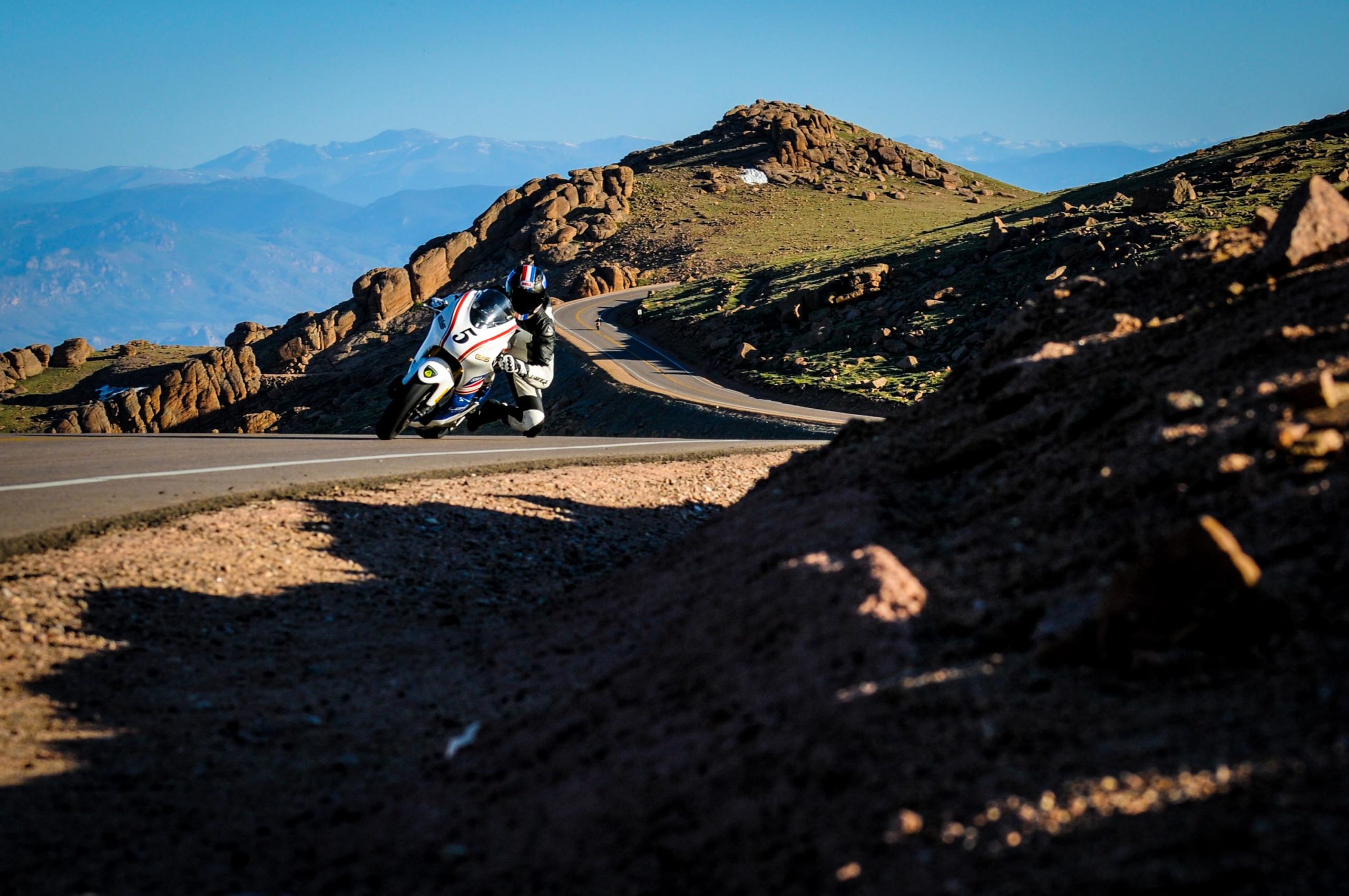In 2019, the Pikes Peak International Hill Climb announced the halting of its motorcycle classes, after the death of Carlin Dunne highlighted the high-speed perils of racing on the 156 turns of the all-asphalt course.
Completing a two-year review on including motorcycles back into the Pikes Peak racing program, the race organizers have concluded that bikes will indefinitely be absent from the Race to the Clouds going forward.
“Motorcycle competition has been part of the history of the race off-and-on since 1916, and has been both thrilling and tragic for competitors and fans alike,” said Fred Veitch, Interim Chairman of the Board for the Pikes Peak International Hill Climb.
“This has been a long process and a difficult decision, but we believe it is the right decision and one that is in the best interest of the organization at this time.”
The news is perhaps not surprising, as many in racing circles had already assumed this outcome after Pikes Peak initial announcement disbanding the bike classes two years ago.
At issue though are a number of contributing factors, the first being the rapid increase of rider fatalities on Colorado road course, which can largely be attributed to the once dirt road being paved all the way to the top of the mountain.
The road paving has seen course speed increase dramatically, especially for the two-wheeled classes. Where dirt bikes were once the weapon of choice going to Pikes Peak summit, road bikes have taken over.
This has also spurred an influx of high-horsepower, large-displacement sport bikes, which have increased road speeds even further.
Pikes Peak organizers tried to temper these speeds by require bikes with flat handlebars and more upright sitting positions, but 200hp+ machines still showed up at the starting line.
The course itself is also at issue, with run-off areas being virtually non-existent, especially at the higher altitude turns.
If anything, the topography can be frightening to consider in a motorcycle crash, with large boulders and steep drop-offs in abundance.
Adding to the issue is that compared to the events like the Isle of Man TT, the Pikes Peak International Hill Climb is woefully under-staffed and lax on safety procedures and course awareness.
This led to the once laid-back rules for spectators giving way to strict fan zones, after pedestrians crossing in front of racing competitors became a noticeable issue, with more than a few close calls.
Of course, the Pikes Peak International Hill Climb has always been a car event first, with motorcycles featuring intermittently throughout the race’s storied history.
With the death of Carlin Dunne casting a negative spotlight on the unique race, wagons have surely circled around keeping the event going forward for automobile enthusiasts, despite Pikes Peak’s dangerous terrain and more provincial racing operations.
Source: PPIHC




